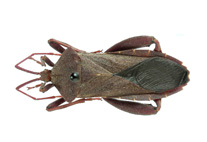Abstract
Presently, only 2 species of dactylogyrid monogeneans have been reported Characidae inhabiting lakes and streams from the Pampasic region (central Argentina). During a parasitological survey on the characid Oligosarcus jenynsii, from Nahuel Rucá Lake (Buenos Aires province, Argentina), dactylogyrids were found on the gills. Specimens were identified as members of Characithecium: C. chascomusensis n. comb, C. longianchoratum n. sp., C. robustum n. sp., C. quadratum n. sp. and C. chelatum n. sp. These species can be distinguished from each other mainly by differences in the shape of the accessory piece of the male copulatory organ, morphology of anchors and ventral bars as well as position of vaginal aperture. The observation of some additional features present in all species studied, such as the vaginal aperture position (as midventral, lateroventral or lateromarginal) and the variability in the morphology of ventral bar (posteromedial projection present or absent) justified an emended diagnosis of Characithecium.

